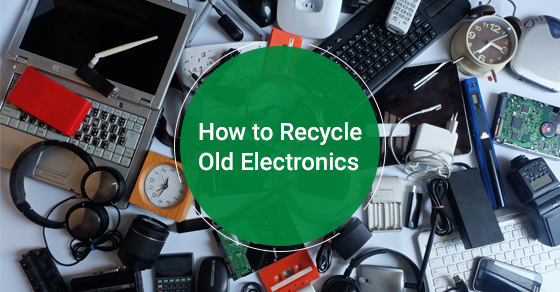From providing entertainment to simplifying and improving many tasks, electronics have become central to both the residence and workplace. However, electronics also create an e-waste problem. Fast technology innovations lead to millions of devices becoming obsolete each year. In response, municipalities have banned many electronics from incinerators and landfills, meaning that they must be reused, recycled, or managed as hazardous waste once they reach the end of their useful lives.
The Danger of E-Waste
E-waste refers to discarded electronics that may harm the ecosystem if improperly disposed. Many electronics contain heavy metals such as lead, lithium, mercury, and other toxic materials that may cause air pollution when incinerated or contaminate the ecosystem if disposed through landfills.
E-waste devices include televisions, computers, laptops, keyboards, mobile phones, tablets, printers, scanners, keyboards, mice, DVD/VCR players, video game consoles, fax machines, and satellite/cable boxes, among others. Considering that you can’t simply put these items together with other trash, many municipalities provide communities with alternative disposal methods such as drop-off locations or recycling events.
Safe Electronics Recycling
It’s unfortunate that e-waste is the most traded toxic waste in the world. All too often, e-waste from developed nations gets shipped offshore to developing countries for sale to consumers at a lower cost, or to facilities that reclaim materials such as aluminium and steel and then sell it. The latter results are hazardous to both the workers and the planet.
Harmful substances in electronics, such as lead, cadmium, mercury, and brominated flame retardants, should be carefully removed from electronics and disposed of as toxic waste. Then, the other materials in recycled electronics will be safely accessed. But this process is complex and costly, so some recycling operations situated in areas with fewer environmental and workplace protection laws and enforcement find shortcuts to make a profit.
Indeed, safely dismantling electronics is tough work, and not all recyclers take all kinds of e-waste. Moreover, some have superior environmental performance and certifications that re-assure communities of proper e-waste management. Consider visiting two or three recyclers before choosing where to take your e-waste, so you only work with those that have e-Stewards or R2 certifications. This means they’re independently audited to ensure they comply with stringent measures for responsible electronic recycling and worker safety.
Getting Rid of E-Waste
The amount of reclaimable versus hazardous materials in electronic waste differs from product to product. Owing to these differences, and the fact that some recyclers don’t accept all types of e-waste, there are a few things you can do before asset disposition in order to protect yourself and the planet:
- Phones, tablets, and computers – Always wipe the data of your electronic device’s hard drive before selling, donating, or recycling it. You can’t really know the kind of person who will access your device once you get rid of it. That said, most reputable e-Steward recyclers destroy all data to prevent it from getting into the wrong hands in the recycling process.
- Tech accessories – An estimated 70% of any electronic item can be recycled. These items typically contain plastic, aluminium, steel, copper, silver, and gold, which can be reclaimed and reused. This saves the planet from the process of mining and processing new raw materials.
- Household electronics – Many pick-up events don’t take appliances, light bulbs, or batteries, yet these items also contain reclaimable materials, in addition to hazardous waste. Consider using Earth911 to find recycling areas near you for specific items.
- Batteries – While alkaline batteries can be 100% recycled, mercury batteries require the mercury to be separated and disposed of at a hazardous waste site. Although single-use batteries today don’t contain mercury, which means that they can be trashed, they should still be recycled at battery drop-off events near you since they contain reclaimable materials like zinc and steel. Rechargeable batteries, on the other hand, contain heavy metal elements and corrosive acids that are harmful to the environment, and must be recycled.
- Light bulbs – High-intensity discharge bulbs, fluorescent tubes and bulbs, and CFLs contain mercury. They should be recycled through waste collection agencies or mail-back services that offer waste management services. Incandescent bulbs are non-toxic and non-recyclable, so they can be disposed in the trash.
- Electric toothbrushes – Only the battery in your electric toothbrush is considered e-waste. So it should be separated and disposed properly.
Final Note: Get Rid of Electronics Responsibly
It’s important to find reputable electronic recyclers to help you get rid of e-waste. They can help you determine what can be refurbished or resold, and even manage the entire process for you. In some cases, the recycler or refurbisher can set up an agreement with you for revenue sharing from some resold equipment, or deduct revenue from the cost of the services provided.
For more information about getting rid of your e-waste responsibly, call eCycle Solutions toll free at (888) 945-2611 or contact us here.
 Call Us Now: 888.945.2611
Call Us Now: 888.945.2611

 Call Us Now: 888.945.2611
Call Us Now: 888.945.2611


Leave a Reply